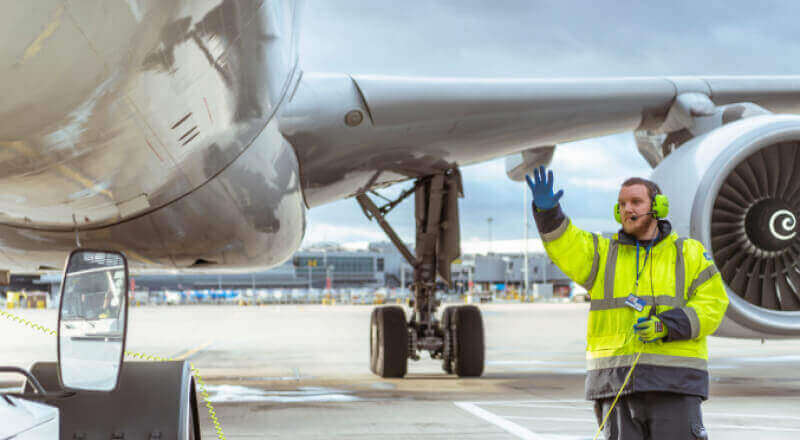How the Internet of Things will revolutionize your supply chain
A batch of vaccines leaves a pharmaceutical company bound for another continent. Each of the thousands of tiny vials has the potential to save a child’s life. But only if the contents of the container are kept chilled throughout the long journey.
From the moment it is driven away from the loading dock, the batch is being tracked. A chip is recording its location, and whether it is being kept upright. Crucially, the chip is also monitoring the temperature of the vaccines. From refrigerated lorries, cargo holds and warehouses, the chip feeds this information back to both the manufacturer and the medical center that has placed the order. Doctors and medical staff can see where the vaccines are and when they will arrive, certain they are in perfect condition. They can plan an immunization campaign that will keep a village free from a deadly disease for a generation.
All this is possible thanks to the Internet of Things.
What is the Internet of Things?
When we hear about the Internet of Things (IoT), we usually think of smart household appliances that can communicate with a network – for example fridges that keep track of their contents.
But IoT devices can be attached to almost anything. As 5G technology becomes more widespread, tiny chips are able to relay a huge amount of data. These chips could be sewn into the collar of a shirt, embedded to a table leg, or attached to the cardboard packaging of a coffee mug. Anything that you want to track can be tracked.
They can report location and state awareness (temperature, humidity, tilt, etc). The data can be accessed from anywhere in the world in real time – alerting anyone who needs to know about delays, detours, unexpected stops and accidents.
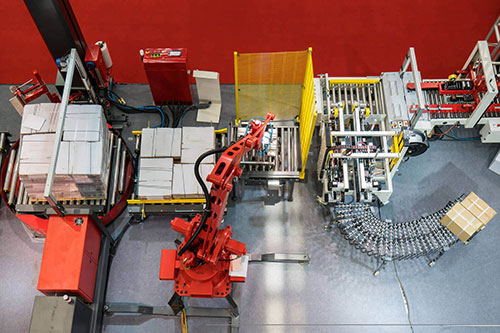
Why does the IoT matter for supply chain?
For the supply and logistics industry, knowing where the goods are and what state they are in is vital. Huge amounts of time and money are spent logging and tracking consignments, with the reputation of the shipper on the line every time a delivery does wrong. Because supply chains typically involve multiple providers and subcontractors, trust is essential.
IoT devices allow complete visibility. A shipping company will be able to keep track of every stage of the process. There will be no opportunity for products to go astray, be tampered with, or even be replaced by counterfeit goods. Shippers can guarantee quality and security, and keep all stakeholders informed about the progress of the delivery at all times.
Opportunities…
The potential benefits of IoT are enormous.
Data from IoT devices can be encrypted and shared using blockchain, so that customers and suppliers have a real-time record of a transaction as it progresses. This will facilitate instant payments and reduce the need for lines of credit.
Inventory management will be transformed. There is no need for time-consuming and costly stocktakes when there is a guaranteed accurate and reliable record of every item entering and leaving a warehouse.
The data provided by millions of objects travelling all over the world can be analyzed to identify optimal routes. Delays and bottlenecks can be predicted. And different options can then be tailored to each customer depending on priorities: cost, speed, security, and carbon footprint.
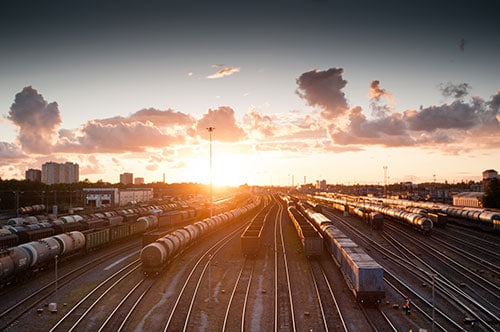
…and challenges
There are two major considerations that will affect IoT in the supply chain: disposability and privacy.
For the former, the question is simple – what do you do with the IoT devices and chips when the item has been delivered?
Currently, most of the IoT devices being used for pilots and trials in the supply chain need to be returned to providers, which is expensive and time consuming. However, the cost of the individual devices and chips is falling rapidly. Discarding chips would create vast amounts of electronic waste and is not sustainable in the long run. Recycling schemes, whether run by transport companies themselves or third parties are likely to be an essential part of the business before long.
There are also privacy concerns about whether an item could continue to be tracked once it has been passed to the consumer. How do you know the chip in your TV or even shirt is no longer active? The industry will need to collaborate to establish safeguards and protocols that can win the trust of the public.
Where is the IoT now?
IoT technology is already being used to track deliveries.
Agility has operated successful pilots with several partners, that have proved the value and efficacy of the technology. We have overcome practical issues such as ensuring IoT devices can be used on commercial cargo aircraft.
There are also a number of companies that offer IoT tracking devices for individual deliveries, such as Roambee.
As 5G is rolled out worldwide, there will be no technical barriers to the widespread adoption of IoT as a standard. High value items, and those that need close temperature monitoring such as pharmaceuticals and fresh or frozen food, are naturally the most likely early adopters. But within a few years, anything that customers or suppliers decide they want to track, will be tracked.
What we are learning
The big lessons in trials with customers are, first, that IoT without a corresponding data strategy is only half the story. IoT expands the data points available to shippers, but without a contextual data science strategy, the data is of little use.
Another lesson is that there is a larger-than-anticipated degree of compliance – whether with governments and regulatory authorities or with transport providers such as airlines – that has to be factored in.
For shippers, the next step is demonstrating where they can extract value from the data. That means using it to generate predictive analysis that strengthens their supply chain.
When a shirt is shipped from China to a shop in Europe, it passes through a complicated and sometimes slow supply chain, involving many different parties, manual data entry and a stack of paper documents.
What’s more, the retailer needs to trust that the shirt is on its way, and usually needs to make payment before it arrives.
Now imagine that the shirt is embedded with an intelligent chip and can be tracked using distributive ledger technology.

As it leaves the factory, it sends a digital signal that it’s on its way. Since this data is recorded in the blockchain, it is secure, immutable and can be trusted by all parties – no one needs to double check or verify that the shirt is on its way.
The retailer can pay for the shirt with assurance that it’s in transit, and the sender can instantly verify that the right person is collecting or receiving the goods.
In short, it’s faster, cheaper and more efficient way to send an item around the world.
This is how blockchain could change the face of logistics: by fostering trust between all parties and eliminating the need to manually track shipments, sign documentation and verify payments.
What is Blockchain?
Blockchain was made famous as a platform to trade cryptocurrencies like Bitcoin. But it has many uses beyond digital money. It is a secure record of transactions, a ledger, in which all data can be publicly verified and shared.
Offering a new way to send, store and verify information, the technology has trust at its core. Its secure, scalable and decentralized nature means its applications are potentially limitless. It could change the way we process and store health records as well as revolutionizing the way we shop, save and invest.
All that means the global blockchain market will be worth $23 billion by 2023, up from around $1 billion in 2018, according to MarketsandMarkets research.
Why does blockchain matter?
Blockchain technology has the potential to make shipping and logistics cheaper, safer and more reliable. It can be used to verify and store information all along the supply chain, as well as connecting different parties, giving them access to data and real-time tracking of goods as they move around the globe.
By embracing it, the industry could lower costs and ease friction. Documentation and administration are estimated to be one-fifth of the $1.8 trillion spent annually to move goods across borders.
What opportunities do Blockchain bring?
The key benefits of blockchain are speed, transparency and security. This generates a high level of trust in a transaction, unleashing a powerful tool for the logistics industry, where transactions involving many different parties and milestones are common.
For example, a very simple supply chain involves the shipper, banks, an assembly manufacturer, parts suppliers, modal carriers, port authorities, freight consolidators, customs officials and many others. It’s easy to see the potential for blockchain in this scenario, enabling the shipper to unlock access to specific information for specific parties, while retaining complete visibility of the whole process.
By enshrining trust in a transaction, there’s no need to verify documents and timestamps, to certify authenticity, or to deliver certificates, streamlining every step in the pathway.

What are the challenges with Blockchain?
Even so, blockchain requires a collaborative approach, and one the industry might not yet be ready to embrace. To unleash its full potential, it needs the buy in and understanding of everyone along the supply chain, as well as agreement on a common approach and standards.
And without a critical mass, the risk is that too many providers try to create their own platform, meaning the results are disjointed.
Another challenge is the potential for a skills shortage. Finding and employing the right people with the necessary skills is essential to bridge the gap between those companies that have the knowledge and the technology in place, and those that don’t.
Fostering experimentation and collaboration will be key to success.
How does blockchain related technology apply to our current needs?
As discussed, distributive ledger technology is ready to go and has the potential to revolutionize our industry. Once a common approach is agreed, adopted, and achieved, its game-changing nature is likely to be unstoppable.
Agility is leading the conversation on how best to harness the potential of blockchain – helping our customers conduct pilots and working together to figure out the best ways forward.
We’ve already teamed up with Maersk-IBM to manage and track container shipments using blockchain, by identifying events associated with individual shipments and sharing information about them via the distributed ledger technology.
In this way, costs can be reduced, trade can be made more efficient, and standards can be set for an industry-wide adoption. Our aim is to help our customers understand how to use blockchain to improve shipment visibility, eliminate paperwork, reduce errors, and shorten transit times.
Blockchain could also help improve safety. Agility is part of a consortium of industry leaders exploring blockchain’s role in mitigating accidents and serious incidents onboard container ships.
Wrongly classified or inaccurately identified dangerous cargo leads to fires and other accidents that result in millions of dollars in losses, ship damage and delays in supply chains. Nearly a quarter of all serious incidents on containerships were attributable to mis-declared cargo, according to the Cargo Incident Notification System. It’s easy to see how blockchain could play a role in continuously tracking and monitoring what’s inside containers and reduce these risks.
Even as these examples show how blockchain is set to change the world, our industry is lagging behind. By recognizing the full potential of the technology and collaborating to foster experimentation, Agility is ready for the disruption that’s in train, and will be prepared when the pace of change accelerates.
What are we learning about Blockchain?
Use of blockchain for shipping remains largely in the pilot and concept stage for the moment. That’s likely to remain the case until there is wider industry participation that creates a tipping point.
Companies developing blockchain solutions are trying to figure out how to monetize a technology that requires so many participants to create an ecosystem. They need to incentive early adopters who can create more use cases and scale the number of transactions taking place with blockchain.
Digital technology is changing the way the world does business and doing so at an extraordinary pace. Whatever your part in the supply chain – customer, supplier, or logistics provider – the speed at which new technologies are being developed can be bewildering.
Agility is working with customers and partners to adapt to this fast-changing landscape. This guide is intended to help you identify which technologies your business should be concentrating on right now.
Keeping pace with change
Agility’s Chief Digital Officer Biju Kewalram says the supply and logistics industry is at a very early stage of its digital evolution, and compares it to the period of the Model T Ford in the car industry.
But just as with the development of the auto industry, some of the areas that attract a lot of hype may prove to be expensive dead ends and some of the less glamorous technologies may turn out to deliver the best returns on investment.
Should you spend heavily on cutting edge last-mile solutions like delivery drones? Does your warehouse need to be fitted with advanced robotics or augmented reality? Without limitless funds for research and development, how will you know what works for your business?
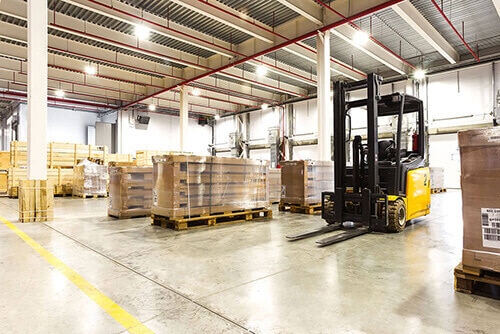
Staying agile
Success in the digital supply chain will be determined more by fostering the right mindset than making the right bet on a particular technology. The key is to take an agile, experimental approach.
The unprecedented pace of change means traditional ways of evaluating technologies are outdated. There simply isn’t the time for a company to carry out a full-scale trial to study how a technology will affect its entire business.
At the same time, sweeping one-off changes to the company’s entire workflow are likely to be too expensive, and too late.
Instead, Agility recommends continuous incremental change – small trials and pilots on a specific part of your process. This allows the trials to be evaluated using real data on the actual impact on your business, rather than based on intuition or hopes for what the technology might one day do.
Successful tries should be scaled up, and monitored carefully as the technology is spread through different parts of your business. But it is also important to be prepared for experiments to fail, and to be able to walk away with small losses. Those failures – and the knowledge of how and why something didn’t work – can then be applied to the next trial.
The success of many technologies will depend on the development of new ecosystems. It’s best to work with trusted partners and other stakeholders to find out how the changes you make affect each other.
There will be no settled end state. We live in an age of continuous innovation. Ever-changing technology means there will always be a need to keep experimenting. Technologies that didn’t have the desired effect when you tried them the first time will need to be looked at again and again, as your processes and the environment you operate in evolves.
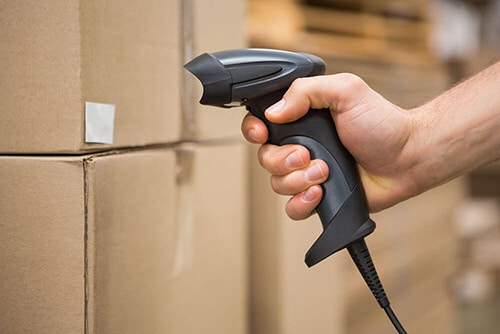
Four Technologies to watch
This is what Agility is doing constantly: working with partners all the way along the supply chain to test how emerging technologies work in the real world.
We currently have a watch list of 16 technologies that are worth keeping an eye on, ranging from machine learning and the cloud to 3D printing, virtual reality, autonomous vehicles and drones.
We have identified four of these that everyone in the supply chain should focus on.
These are already being used to a greater or lesser degree in certain areas of supply and logistics. We believe they will be the foundation of many of the changes likely to sweep through the industry.
They are the BIRD technologies – Blockchain, Internet of Things (IoT), Robotic Process Automation (RPA) and Data Science. Agility has created guides to each of these that help explain how they work, what they can do, and how they can benefit your business.
The BIRD technologies overlap when it comes to how they enhance the way we use data and harness the potential of the digital revolution.
Blockchain establishes trust in data.
Internet of Things provides a vast quantity of relevant data points.
Robotic Process Automation improves the accuracy of data.
Data Science extracts value.
Companies that successfully integrate these four technologies will be in a strong position to take advantage of whatever comes next.
What the future holds
Imagine a product rolling off a production line. From that moment, it is tracked. Its location, tilt, and temperature are securely recorded on an encrypted ledger that cannot be faked. All relevant parties – manufacturer, exporter, shipper, importer, customs official, wholesaler, retailer – have immediate access to the information they need. That information is automatically processed, and there are no errors. The route chosen has been optimized to be cheap, safe, quick, and with the minimum carbon footprint.
Payments can be made immediately with no need for lines of credit. The end recipient knows they are getting exactly what they ordered, delivered in perfect condition. There have been no hold-ups for paperwork, document checks, or delays at port. Lower costs, more satisfied customers, better profit margins.
This is all possible using technology that exists today. Within just a couple of years, it will be common across the industry. With Agility’s help, your business, large or small, can lead the way.
Brazil is the third-largest trucking market in the world after China and the USA, but has historically struggled with poor road freight infrastructure and a supply-and-demand imbalance between freight and trucks.
CargoX, which has been called the Uber of Brazilian trucking, is using big data, machine learning, and the sharing economy concept to radically overhaul the country’s cargo transportation system.
CargoX has built a marketplace via mobile app that connects over 250,000 truckers with shippers moving goods around Brazil. The app reduces costs for shippers, boosts truck drivers’ income, and increases efficiency.
Since it launched three years ago, CargoX has enjoyed massive success, attracting millions of dollars of investment and swiftly dominating the Brazilian trucking market.
We spoke to founder and CEO Federico Vega about the company’s success, and about how machine learning and big data are transforming trucking.
How is CargoX using data and machine learning to improve Brazilian trucking?
We’ve been compiling and analyzing data since 2013, and more than 60% of truckers in Brazil now connect to our app on a monthly basis.
This level of market penetration provides us with an unrivaled level of data, which makes our real-time updates incredibly accurate. The richness of our data, paired with our technology, is what puts CargoX ahead of any competitor and makes our app so effective.
Our machine learning algorithms can calculate where trucks are likely to be at a certain time, solving the problem of 40% to 60% of trucks in Brazil running empty because they can’t find a load. For example, if a truck is in São Paulo now and will be in Rio de Janeiro in a few days, the algorithm can predict this and can match the truck capacity with freight that needs to be transported.
Machine learning can also help to improve safety and decrease the chances of freight theft, which is quite common in Brazil. Data on freight robberies such as location, type of freight, and time of year are used by the machine learning algorithm to calculate ways of lowering the risk.
By using data and machine learning to improve trucking safety and efficiency, we’re making a positive difference for shippers, truckers, and the wider community.
Why do truckers choose to work with CargoX?
We estimate that truckers can earn around 30% more when they work with CargoX because with other carriers they spend a lot of time traveling empty. Our business model ensures that they are always traveling with a full load, so they make more money per kilometer.
It also provides a more efficient, streamlined process for the truckers. On average, truckers in Brazil have to travel 60 kilometers to find loads. With the CargoX app, you can search for a load nearby, and then secure it and pick it up.
We also solve the problem of truckers going unpaid, by conducting credit checks and background checks on the shippers who use our platform. And once a driver has accepted and delivered a load, they’re paid by CargoX, so we guarantee their payment and take some credit risk on their behalf.
And what about the benefits that CargoX provides for shippers?
Once you open a CargoX account, you can post your freight on a web dashboard and then it gets pushed to drivers via the mobile app, along with the pricing. When a trucker accepts the load, they deliver it and get paid.
Our dashboard enables shippers to track and analyze their loads, which is really useful when shippers are moving hundreds or even thousands of loads every month.
CargoX launched in 2016, and has been very successful in a short period of time. What has been the key to your rapid growth, and what advice would you give to other entrepreneurs?
We were in a good position to grow fast without making as many mistakes as competitors because we had the involvement of highly knowledgeable investors like Agility. CEO Tarek Sultan has been excellent at providing advice and pointing us in the right direction. He’s also been able to make valuable introductions to everyone from financial investors to potential clients, and provided information on things we could do here in Brazil that Agility has done elsewhere in the world.
With a board of directors, advisors and investors who go beyond being sources of capital and who really understand your business, you can get ahead of the competition. We are a trucking company, but we’re also a technology company. One of our investors and directors is Oscar Salazar, co-founder and former CTO of Uber, who has the knowledge needed to run the technology side of the business. And then someone like Tarek has deep knowledge of how to run a logistics business, but also has the entrepreneurial expertise, and knows how to rapidly grow a company. And the involvement of Eddie Leshin, the former CMO of US freight marketplace Coyote Logistics, has been invaluable too.
This depth of knowledge and experience really makes a difference when you’re starting and scaling your business, and also commands more investment, as people can see that you have the involvement of people with experience and you’re more likely to thrive.
3D printing is big news. It is already a $14.5 billion dollar industry, and is set to keep growing steadily over the next few years. Reports saying it’s now possible to print everything from weapons to an entire house are very eye-catching – and for many businesses and industries potentially alarming.
There’s no doubt that 3D printing, which is also often called “additive manufacturing”, has world-changing disruptive potential, but are we really about to start printing everything we need? Famously, Bill Gates’ mission at Microsoft was to put “A computer in every home”. For the additive manufacturing vanguard, is this about to be updated to “A 3D printer in every home”?
We caught up with Biju Kewalram, Agility’s Chief Digital Officer, to find out the reality of 3D printing, how it is affecting the global supply chain, and what it means for logistics startups.
Is the 3D printing trend really everything it’s made out to be, or is it hype?
There’s no doubt that 3D printing is going to revolutionize global trade at some point – even more than we can currently imagine. However, many projections are over-ambitious about how quickly that impact is going to happen.
When people talk about 3D printing, they tend to imagine whole items which are ready-made, like houses, clothes or food. Additive manufacturing is already being used in a lot of products, but it is often to create prototypes or to assemble small elements of larger products, such as parts, finishings and fittings. These are very useful, but not quite as glamorous!
When it does take off, some futurists talk about every home having its own 3D printer to produce everything they need. Won’t that destroy the logistics industry?
This isn’t a very realistic scenario! 3D printers are already available to buy, but for individual households they are quite expensive and limited in what they can produce, so their uptake has been limited. Some people might start printing certain things at home, but personal printers replacing third party goods altogether is unlikely to ever happen. If it does, there are so many other issues to overcome – like households storing the necessary range of raw materials – that it is still an extremely long way off.
That’s not to say there’s no appeal. My colleague Henadi Al-Saleh and her children had a great experience trying out a 3D printer at home. Her son really loved designing his model and watching it print. There’s clearly something very special and exciting about this technology, but there’s a world of difference between that and it replacing shopping as we know it.
So what’s the real impact of 3D printing for the logistics industry?
It’s crucial to understand that once 3D printing revolutionizes manufacturing – which there’s no doubt it will – there will still be a supply chain. It’s going to transform logistics, not destroy it.
Even with 3D printing as the main method of global manufacturing, the various raw materials needed to print goods will still have to be sourced, moved and stored. Warehouse capacity for hundreds of thousands of printers will be required, and printed goods will have to be transported to their end destination.
Right now, the puzzle of how to reposition the raw material needed for 3D printing at scale still hasn’t been solved. How are you going to get the right amount of raw material in the right place at the right time so you don’t have leftover inventory? 3D printing won’t destroy the supply chain; it will just replace one puzzle with another.
What’s Agility doing in the 3D printing space?
At Agility, we have a stack of 18 technologies we are continuously monitoring for market opportunity, and 3D printing is one of them. We use a defined methodology to assess each technology’s state of readiness, and move when it becomes an attractive opportunity.
At the moment, 3D printing doesn’t fulfill our criteria. We’re waiting for new business models to emerge, but we’re monitoring the technology’s progress and we fully expect it to become attractive in the future. When the time is right, we’ll start moving rapidly through our pilot and partner process.
What does it mean for tech and logistics startups?
It’s certainly nothing to be alarmed about, and there will be exciting opportunities because of this technology in the future. Big logistics players are monitoring the technology and opportunity, and although 3D printing will one day change how goods are manufactured and distributed more than we realize, we are not quite there yet.
Startups developing new ideas and business models in the logistics space certainly shouldn’t be put off by 3D printing. And in lots of areas of tech and manufacturing, 3D printing is already having a big impact – so startups who can harness this momentum can make a real impact.
The secrets of the World Economic Forum Technology Pioneers Community
Each year since 2000, the World Economic Forum has selected high-potential, early-stage companies that are poised to make a social and business impact through innovation.
The Technology Pioneers are an impressive bunch. Alumni of the program include Airbnb, Google, Kickstarter, Mozilla, Spotify and Twitter, so there’s clearly something very special about the community. Pioneers take part in the Forum’s initiatives and events, including the annual meeting in Davos, where they bring new perspectives and cutting-edge insights to crucial global discussions.
Could you become part of it? Henadi Al-Saleh, Chairperson of the Board of Directors at Agility, sits on the Selection Committee and helps to pick Tech Pioneers such as Niama El Bassunie, CEO of the online African marketplace WaystoCap, a four-year-old company headquartered in Morocco that helps small importers, exporters, wholesalers and retailers with sourcing, ordering, insurance, payments and delivery. We caught up with both women to get the inside scoop.
Henadi’s view.
What makes the program so important?
Like the Forum, I believe innovation is critical to society’s future well-being and to driving economic growth. The Tech Pioneers are moving the dial in areas like the Internet of Things, robotics, and artificial intelligence, so they’re an important part of this.
Entrepreneurial thinking drives progress because it addresses pain points innovatively and sustainably, but there must be a good support system for ideas to become reality. The program is a great way of doing that.
It’s also such an important way to give individual entrepreneurs the recognition they deserve, and to use their work and successes to inspire a new generation of entrepreneurs.
Why is Davos a good platform for the Tech Pioneers?
Davos and other World Economic Forum events are brilliant opportunities for the Tech Pioneers to showcase their ideas and products to business and government leaders, but more importantly these events brings their perspective to the global dialogue. With their participation, Davos becomes a more inclusive platform for a segment of the economy that is critical to our future.
At Davos, I come across so many important ideas, and it’s even better that these come from a range of perspectives. And this year, Agility attended a Forum event with executives from Homoola, a digital load-matching startup we’ve invested in. We knew it would be a great opportunity for them, but that they could offer lots, too. The same is true of the Tech Pioneers – I saw them talking with some of the world’s most important decision makers about governance of new technologies, robotics and the future of the workforce, and about how data is managed and regulated.
What do you enjoy most about being involved with the Tech Pioneers?
It’s exciting to see Pioneers getting so much from the program, but I’ve discovered some interesting ways of thinking from them, too. Agility champions SMEs because they’re the lifeblood of the global economy and they’re often very innovative. We mentor and invest in smaller companies because we can learn a lot, and it’s the same with the Pioneers.
I met Niama at Davos, and her company WaysToCap is making a real difference to African trade already. It’s an online marketplace which currently specializes in facilitating trade in North Africa and French-speaking West Africa. Agility has logistics infrastructure and order fulfilment expertise in the same geographic area. So you end up having very productive conversations, and there’s lots of potential for mutually beneficial collaborations.
Niama’s view.
Why did you decide to apply for the Tech Pioneer community?
WaysToCap believes in the power of technology to affect change, which makes the Tech Pioneer community a great fit. Our marketplace platform uses technology to unlock African trade, and we believe helping businesses access international trade creates a more competitive playing field. So the community’s focus on real-world impact was perfect for us.
We also knew it would be valuable to join a community. Having just finished the Y-Combinator accelerator (which provides seed funding, advice and contacts for start-ups), I saw the impact a network has on business development. The Pioneers community was especially exciting because it’s so focused on technology and impact.
What do you enjoy most about being a Tech Pioneer?
As a Tech Pioneer, you can be involved at so many different levels. If you’re interested in high-level policymaking, you can join committees for a particular issue. At a business level, there are groups which focus on your sector – for example, WaystoCap is part of the ecosystem for platforms. We’ve learned a lot which can improve our offering, but we’ve also been able to influence the discussion and contribute an African perspective, which is under-represented at times.
At a micro level, you can contribute towards the UN’s economic sustainable development goals in very diverse ways. We launched the WaystoCap Fellowship Program in our Benin and Morocco offices. It is designed to improve economic growth through employment.
What was it like going to Davos?
Davos is an incredible experience. It’s full of opportunities to get involved, make connections, learn from others, and contribute to interesting panels. It’s not every morning I get to discuss African trade with presidents and prime ministers over breakfast. If that’s not an incentive for startups to get involved in the Tech Pioneers community then I’m not sure what is!
How GCC startups can turn online return pain into profits
E-commerce in the GCC, worth $26.9 billion in 2018, could rocket to nearly $49 billion by 2022. But as established and new players compete for market share, one area of e-commerce that’s yet to be capitalized on is online returns.
Quite often, when the goods are delivered, the journey is far from over. Online returns are often referred to as the dark side of e-commercebecause they’re painful for all involved. Turns out, supply chains don’t work as well when they have to operate in reverse.
Returned merchandise is a hassle for consumers, and expensive for retailers. New solutions are needed – in packaging, labelling, pickup, shipping, efunds and other areas – so innovators who provide these could win big. Startups are already shaking up online returns elsewhere.
In the GCC, 30% of online purchases are returned. If this remains the same as the e-commerce market grows, the value of online returns could hit a whopping $6 billion by 2020. This presents a huge business opportunity for startups in the region.
Online returns: all pain, lots to gain
To provide a winning solution for the region, it’s crucial to understand the e-commerce returns pain points for GCC consumers and retailers.
Online returns are frustrating for consumers because there’s no standard way to return merchandise bought online. Consumers are left to fend for themselves. They must figure out the returns policy, terms and conditions, cost and method of return for each of their purchases.
Customers are expected to understand where to start the process depending on how they’ve made their purchase (this could be directly from a retailer, or through a third party website selling the retailer’s products), and often have to fill out vast amounts of information to process their request. Then they repack and label their returns and figure out where to drop their parcel off, or arrange for it to be picked up by the retailer or a third party. After the return is finally processed, they’ll get a full, partial or zero refund, but this can take up to 14 days.
In the U.S. and Europe returns are often free, with immediate refunds or store credits. Consumers can use drop-off points to return goods from a range of retailers, can arrange for courier or postal service pickup, or can walk returns into brick-and-mortar stores.
According to a report from Swisslog, the cost of handling online returns is typically three to five times higher than original shipping costs, making it the main driver of logistics cost increases for retailers. So many retailers would prefer that their customers keep or destroy unwanted purchases rather than try to return them.
In the European Union, and most other parts of Europe, it’s a fairly straightforward process to deliver across borders. But in the GCC, every border has its own customs point that requires compliance checks, which add time and cost to every delivery – and which are doubled in the case of a return.
Another major headache for GCC retailers is cash – a key differentiator of the region. Cash is king for GCC consumers, and they often use it to pay for online purchases upon delivery: 67% of all payments online in Saudi Arabia and 58% in the UAE are cash-based. In the event of a return, the seller needs a way to hand money back to the consumer, and then bear the financial burden if anything happens to the goods in transit.
GCC consumers and retailers both suffer from this complicated returns process and both groups want to see inventive new solutions.
How startups can light up the dark side of e-commerce
For the GCC, an ideal e-commerce returns solution would be a retailer-agnostic digital platform that consumers can use to request a return for their online purchases. It should come with a standard returns policy – better than anything already offered in the region – that puts the customer first. A policy that retailers signing up to the platform would have to adhere to.
The policy should be clearly displayed on the website, along with FAQs, and terms and conditions must be clear and easily understood, so that consumers know exactly how long it takes to receive a refund or account credit. Everything should be clearly spelled out in Arabic, and there should be dedicated customer support through chat, email and phone.
The platform should be flexible, offering the consumer the option to either drop off their purchase or have it picked up. Home pick-ups could work particularly well for the GCC because large extended families often live together or there is domestic help, meaning there’s often someone at home. Consumers should receive immediate refunds, less fees. Finally, returns would be consolidated for return to retailers.
The startup bringing the platform to market would need to partner with an established logistics player that can take care of the back-end of the process, ensuring goods are collected quickly and securely and delivered to retailers. Key to success would be a logistics partner with a cross-border network throughout the region to ensure ease, speed and compliance when it comes to border controls.
The $6 billion business opportunity
In the GCC, consumers have shown a willingness to pay the price for an online returns service if it guarantees quick and easy returns from their door. If consumers are willing to pay for convenience, the fulfillment and processing costs can be covered, leaving a healthy profit margin for the provider of the solution.
The best answer is a platform that is technology-driven and asset light. A lean and low-risk business model makes this opportunity an ideal proposition for SMEs. The flexible, agile nature of startups could also put them in the best position to take advantage of the huge scale-up opportunity offered, given the $6 billion potential of the online returns market in the GCC.
The market is wide open: there are currently no regional independent players. All returns are managed and processed by retailers.
It’s time for startups to transform the e-commerce returns market in the GCC and bring consumers, retailers and shippers into the light.
In recent years, large global companies have come to understand the need to innovate and evolve more rapidly to stay competitive and relevant. That recognition gave rise to the corporate ecosystem, an ever shifting collection of partnerships, alliances and collaborations that expose companies to fresh ideas, minimize their cost of trying new things, and let them learn by doing.
Ecosystems for small and medium-sized companies (SMEs) have been slower to take shape. Now they’re finally coming into view.
Strategist James F. Moore first noted the parallels between the natural world – where living organisms interact with one another and with elements in their environment – and what was taking place in the business world at the dawn of the Internet Age.
Moore wrote in the Harvard Business Review in 1993 that by joining a business ecosystem, companies could “co-evolve” and innovate together. “Successful businesses are those that evolve rapidly and effectively. Yet innovative businesses can’t evolve in a vacuum. They must attract resources of all sorts, drawing in capital, partners, suppliers, and customers to create cooperative networks.”
Business leaders today accept the importance of the ecosystem as a means of creating future value. In a 2017 study by Accenture, more than 97% of major companies said future business models would be created within ecosystems.
Smaller businesses need their own ecosystems. They require products, services, partners and collaborators that speed their digital journey; help them enter new markets; allow them to deploy their data; and give them access to scale-building technology that sharpens their competitiveness.
Big businesses are relentless in their hunt for the small, tech-driven “unicorns” that can bring outsized value to their ecosystems. But until now they’ve had little interest in more prosaic SMEs as ecosystem collaborators, protégés or even customers. That’s been especially true in emerging markets.
In Africa, where SMEs provide 80% of jobs and represent 90% of all companies, the life cycle for most small businesses is tragically short. Bigger companies and governments are doing little to help them develop their own ecosystems or close what the London Stock Exchange group says is a $140 billion SME funding gap.
Venture Africa says: “Unfortunately, the hostile business ecosystems in many African countries don’t support the growth of SMEs, resulting in their rapid death.”
That is changing, albeit slowly. The SME ecosystem is at the heart of some notable new initiatives. The Monetary Authority of Singapore has formed Business sans Borders, a hybrid business data and solutions hub that will use artificial intelligence and other capabilities to aid in the digital transformation of SMEs. Mastercard, SAP and others are taking part in the project.
Kuwait’s $6.5 billion National Fund provides SME startup capital and steers young SMEs to private sector mentor-advisor companies that can stress-test their ideas and help them figure out what it takes to go to market.
Similarly, Saudi Arabia is knitting together a network of innovation centres, entrepreneurship platforms, incubators, accelerators and co-working spaces to foster SME creation and growth.
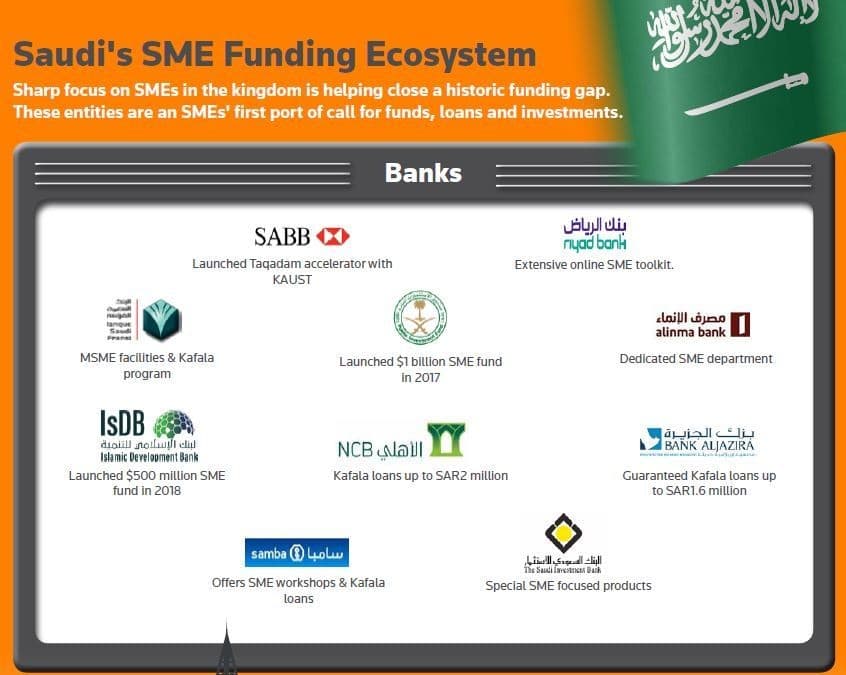
Officials in Pakistan recently identified SME growth and ecosystem support as the country’s top economic priority.
Elsewhere, Scale-Up Denmark is introducing Danish SMEs to larger corporates and prodding them to sell in global markets. And SheTrades, an initiative of the Geneva-based International Trade Centre, aims to connect 3 million female entrepreneurs and female-owned small businesses by 2021.
Even sophisticated, tech-driven SMEs have been hampered by lack of access to affordable data analysis. Hal Varian, chief economist at Google, says powerful number crunching and analysis are now available to SMEs through programmes such as R and Python, Google’s Kaggle, or easy-to-use machine learning algorithms offered by TensorFlow, Cafee and others.
Varian is credited with coining the term “micro-national” to describe the new breed of entrepreneurs and small businesses that have joined the competition for cross-border trade. Micro-nationals are proliferating as they discover online tools that give them buying power, capital, market access and local connections needed to export and do business outside their home markets. Eighty-six percent of SMEs in one survey felt technology was “levelling the playing field” for them to operate globally.
In India, small manufacturers can now use a cloud-based platform to analyze the efficiency of plant machinery and begin their digital transformation.
Lazada, Shipa, Kabbage, First Circle and others are building technology, logistics infrastructure and financing mechanisms designed for small business “e-tailers” and entrepreneur-led e-commerce.
Banks in New Zealand, Spain, Germany and Australia are offering SMEs services like those they market to big corporate customers: advisory services, financial management, strategic insights, and tools that help with forecasting.
Florian Semle wrote in Medium: “Ecosystems emerge through cooperation of a wide range of different players – startups, companies, platforms, services providers, consultants, research hubs and more, to solve common problems.”
He said building an ecosystem “is the way to create a structured framework out of the noise and complexity of digital transformation. It is a process of social acceleration, designed to overcome organizational limitations in speed, expertise, talent, technology and flexibility”.
At many big companies, the ecosystem is awkward, uncomfortable, hard to manage. It is a painful social and cultural stretch that requires large organizations to offer creative freedom, collaborate, and innovate within a network in ways that feel alien. Only a small minority of those surveyed in the Accenture study believed their company culture was ready for that kind of collaboration.
Ecosystems that connect large companies and SMEs are good for both. SMEs, in addition to bringing ideas and energy, come with a hunger that is often missing in big corporates, along with a tendency to question entrenched notions and accepted practices. SMEs help quicken the metabolic rate in lethargic ecosystem partners that are slow to spot and grab market opportunities.
And in emerging markets, SMEs can be the most valuable ecosystem partners. That’s because larger homegrown players – usually the most sought-after partners for global companies – are often overly concerned about guarding market share and too hesitant to share proprietary data to be of much value as ecosystem collaborators.
Most emerging markets have voracious appetites for new business models. They feature a furious rate of technology adoption. They offer pools of eager, young talent. All these elements are essential to successful, dynamic ecosystems – meaning ecosystems that generate value.
India, where internet penetration has yet to hit 30%, hints at the wildly vibrant ecosystems driving growth in social media platforms that were adapted to local tastes and habits with the help of thousands of SMEs.
India is already the world’s largest market for WhatsApp and Facebook; no. 3 for Instagram; and no. 4 for Twitter; home to four of Tinder’s top 10 cities for paying users; and the location of one in 10 Uber rides, according to research firm eMarketer.
So the next time you take a hard look at your ecosystem, see if you can spot the hole.
This article is part of the World Economic Forum Annual Meeting
Read the original article here: https://www.weforum.org/agenda/2019/01/smes-make-the-most-valuable-partners-heres-why/
